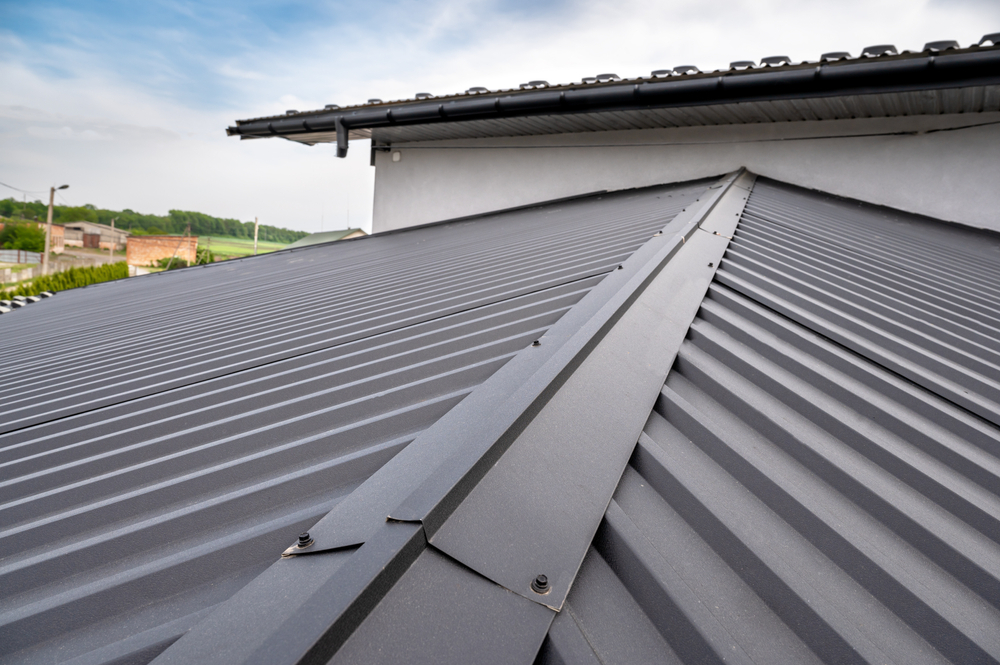A metal roof is a roofing system made of metal panels or shingles, designed to provide protection to a building. Metal roofs are commonly made of aluminum, steel, copper, or zinc.
Importance of Vapor Barrier:
A vapor barrier is a material that is used to prevent the transfer of moisture vapor through a wall, floor, or roof assembly. In a building, the vapor barrier is used to keep the interior environment dry, which is important for protecting the building’s structure and the occupants’ health and comfort.
This is to inform you that the importance of a vapor barrier and the consequences of not having one when installing a metal roof. It will also explore the benefits of metal roofs covering purlins, and provide guidance on choosing the right metal roof for your building.
Contents
What is a Vapor Barrier?
A vapor barrier is a material that is used to resist the passage of water vapor through a building assembly. It is typically installed on the warm side of the insulation to prevent the movement of moisture into the interior of the building.
Function:
The function of a vapor barrier is to protect the building structure and its occupants from moisture damage and mold growth. Moisture can cause significant damage to a building’s structure, such as rot and decay, and can also affect indoor air quality.
Importance:
A vapor barrier is an essential component of a building’s envelope, as it helps to prevent moisture from entering the building and causing damage. Proper installation and selection of a vapor barrier are critical for ensuring the long-term performance and durability of a building.
In the Absence of a Vapor Barrier
Consequences:
In the absence of a vapor barrier, moisture can enter the building, causing damage to the building structure and promoting the growth of mold. This can lead to serious health problems for the building’s occupants, and can also reduce the overall energy efficiency of the building.
Dangers:
The absence of a vapor barrier can also lead to the growth of mold, which can release harmful spores into the air and cause respiratory problems, allergic reactions, and other health problems.
Prevention:
To prevent these consequences, it is important to install a proper vapor barrier when installing a metal roof. This can help to ensure that the building remains dry and healthy, and also helps to maintain its energy efficiency.
Metal Roofs Cover Purlins
Definition of Purlins: Purlins are horizontal structural members used to support roof panels or sheets. They are typically installed parallel to the ridge of the roof, and provide additional stability to the roof structure.
Purpose of Purlins: The purpose of purlins is to provide additional support to the roof panels and to distribute the load of the roof more evenly. Purlins also help to reduce the amount of thermal bridging that occurs in the roof structure, which can improve energy efficiency.
How Metal Roofs Cover Purlins
Metal roofs are typically installed over purlins, which provide a solid base for the roof panels or shingles to be attached to. The metal roof panels or shingles are then fastened to the purlins, creating a complete roof system that provides protection to the building.
Benefits of Metal Roofs Covering Purlins
Energy Efficiency:
Metal roofs can provide improved energy efficiency, as they can help to reduce thermal bridging and prevent heat loss through the roof. This can lead to lower heating and cooling costs, and improved comfort in the building.
Durability:
Metal roofs are known for their durability and long lifespan. They are resistant to weather elements such as wind, rain, and snow, and can withstand the effects of time and exposure to the elements better than other roofing materials.
Aesthetics:
Metal roofs can add a modern and stylish look to any building. They are available in a variety of colors and finishes, and can be designed to complement the existing architectural style of the building.
Choosing the Right Metal Roof for Your Building
Factors to Consider:
When choosing a metal roof for your building, there are several factors to consider, such as the climate and weather patterns in your area, the slope of your roof, and your budget. Other important factors to consider include the type of metal used, the color and finish of the roof, and the style of the roofing panels or shingles.
Types of Metal Roofs:
There are several types of metal roofs available, including standing seam, corrugated metal, and metal shingle roofs. Each type of metal roof has its own unique benefits and drawbacks, and it is important to choose the right type for your building based on your specific needs and preferences.
Cost Analysis:
The cost of a metal roof will depend on several factors, including the type of metal used, the size of the roof, and the location of the building. It is important to compare the cost of different metal roofing systems and to consider the long-term benefits and savings that a metal roof can provide.
Conclusion
It has also explored the benefits of metal roofs covering purlins, and provided guidance on choosing the right metal roof for your building.
Installing a metal roof is a significant investment, and it is important to choose the right metal roof for your building based on your specific needs and preferences. By choosing a metal roof that covers purlins and is installed with a proper vapor barrier, you can ensure that your building remains dry, healthy, and energy-efficient for many years to come.

